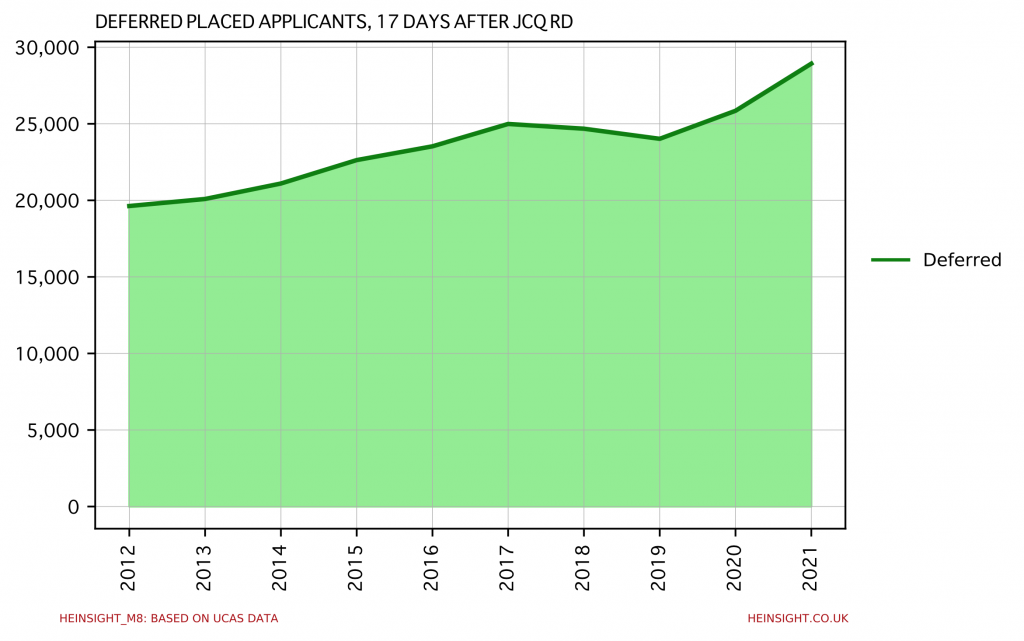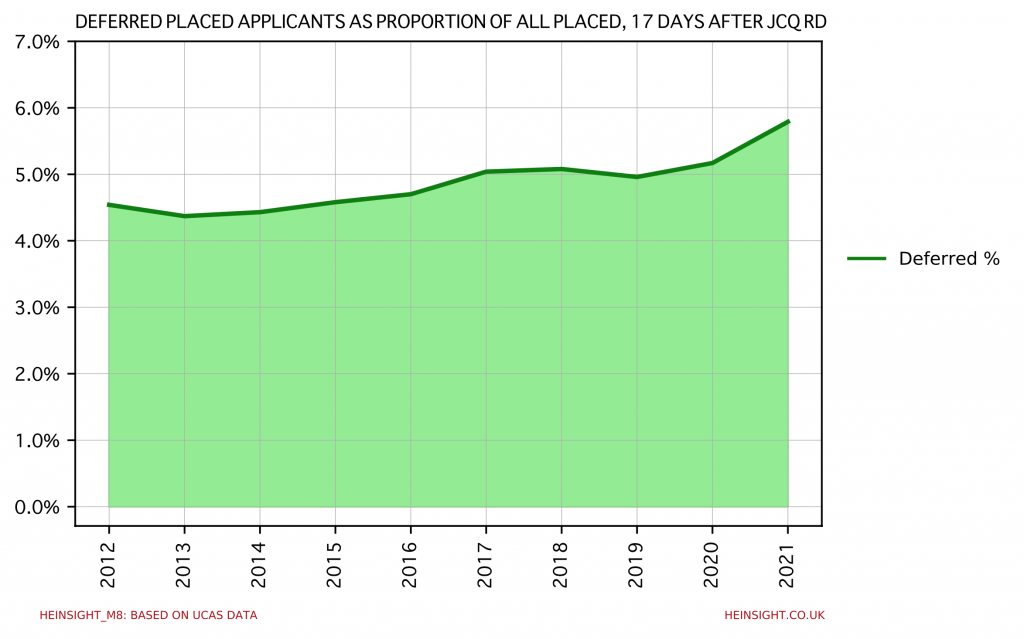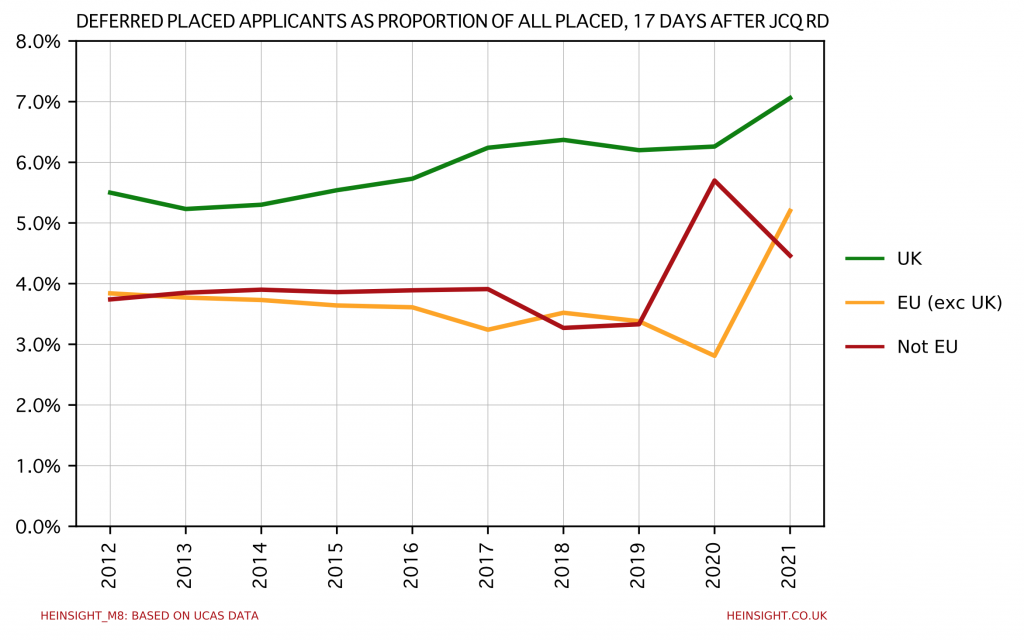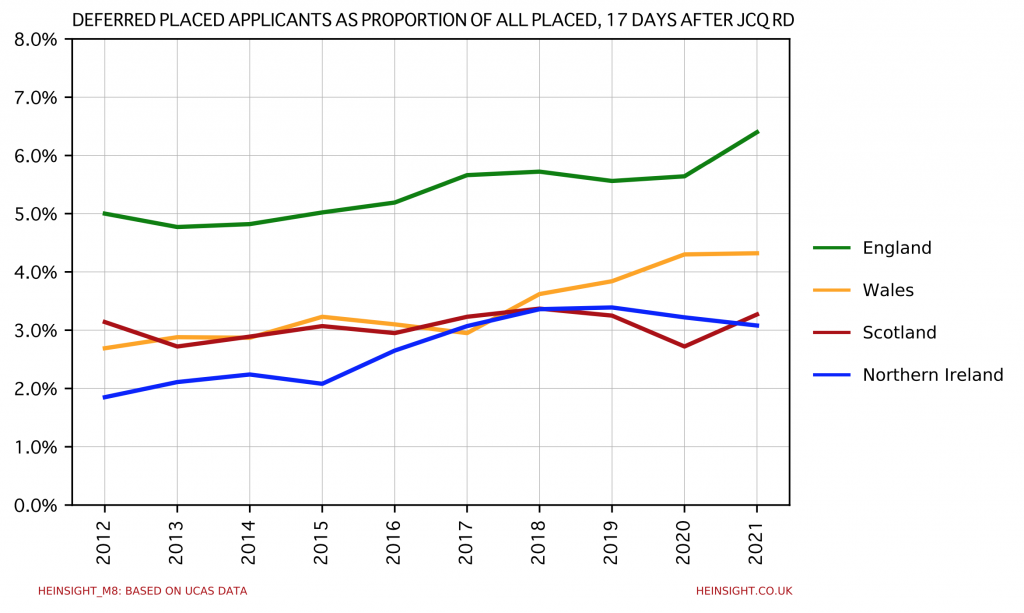As The Times reported on Monday, UCAS statistics show that this year there are a record number of placed applicants who have deferred starting their studies. Approximately 29,000 applicants placed in this cycle are deferred in total.

This isn’t just a product of a higher total number of placed applicants but instead represents a notable rise in the proportion of placed applicants deferring their studies.

This rise in the deferral rate is being driven by UK and EU domiciled applicants. Whilst UK domiciled applicants continue to be most likely to defer, their EU domiciled peers have seen the biggest jump in their likelihood to defer – no doubt connected to their changed fee status. Meanwhile applicants from outside the UK or EU have bucked the trend and reduced their deferral rate from the unprecedented high observed in 2020.

Within the UK, it is applicants from England that continue to be most likely to defer and that have contributed most to the rise in the overall UK rate, although the rate for Scottish applicants has risen also. Welsh applicants meanwhile have deferred at almost exactly the same rate as in 2020 and Northern Irish applicants are less likely to have deferred this year than in the last.

At this point it is difficult to gauge how much of this rise in deferrals is due to the preferences or concerns of applicants and how much has been manufactured by incentives to defer offered by over-subscribed institutions. It is however already clear that one of the many admissions hangovers for providers moving into the 2022 cycle will be the substantially higher number of deferred applicants on their books.
